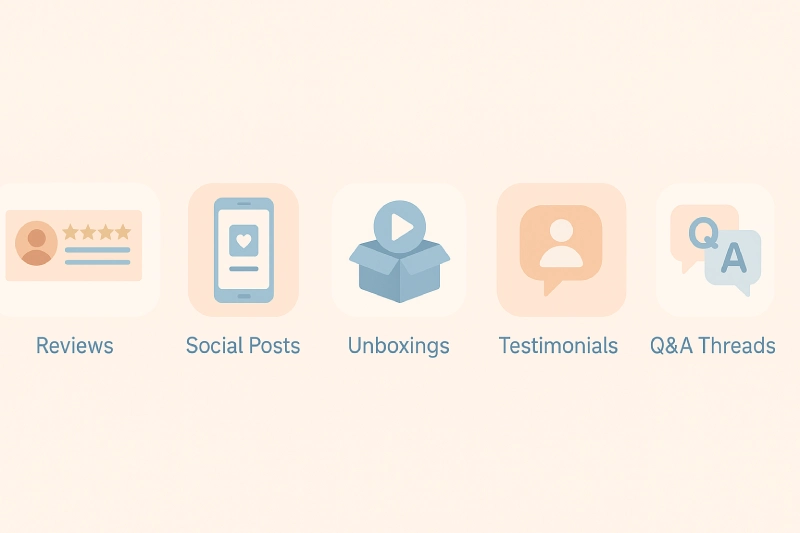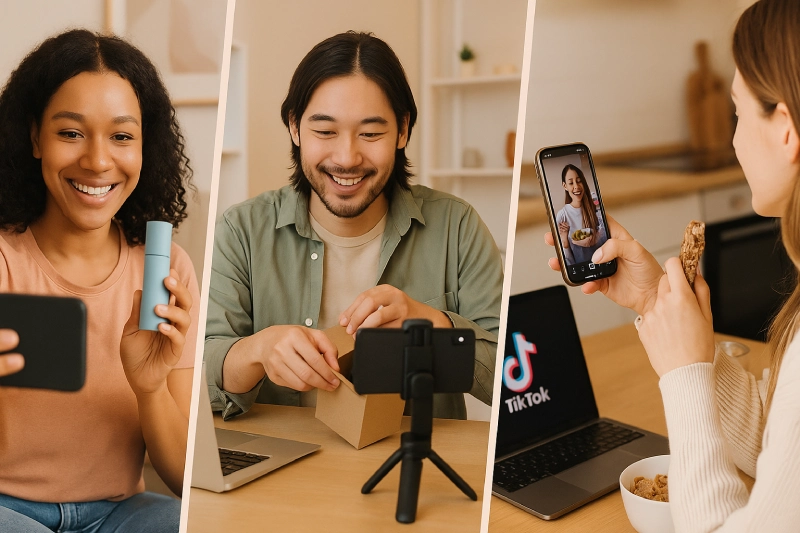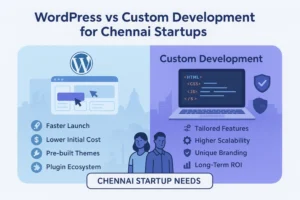A strong user generated content strategy is no longer just a bonus—it’s a must-have for brands in 2025. In a digital world overflowing with polished ads and AI-generated posts, people crave something real. They want to hear from other humans—not just logos.
That’s where user-generated content (UGC) steps in. Whether it’s an unfiltered Instagram reel of someone using your product, a Google review sharing an authentic experience, or a TikTok unboxing that goes viral—these bite-sized, community-powered pieces of content speak louder than any corporate campaign ever could.
Brands that implement a clear user generated content strategy don’t just increase reach—they build trust, engagement, and conversion rates. UGC acts like social proof on steroids. It creates a sense of “if others love it, I probably will too,” which is gold in the age of skepticism.
In this article, we’ll break down exactly what a user generated content strategy is, why it’s become a non-negotiable for modern marketers, and how to build one that fuels long-term brand loyalty.
What is a User Generated Content Strategy?
At its core, a user generated content strategy is a structured plan for how a brand encourages, collects, and leverages content created by its own customers or followers. This includes everything from glowing reviews and 5-star ratings to selfies, product demos, testimonial videos, and even memes.
Unlike influencer content, UGC is usually unpaid and created voluntarily—making it more authentic and relatable. Formats vary widely:
- Photos and videos (especially on Instagram and TikTok)
- Written reviews on platforms like Google or Trustpilot
- Unboxing experiences on YouTube
- Hashtag challenges and comment threads
A smart user generated content strategy involves choosing the right platforms, encouraging participation with incentives (like giveaways or features), and curating the best content in ways that enhance brand trust.
Done right, it turns your happiest customers into your most powerful marketing team.
Why UGC Builds Brand Trust
Authenticity & Social Proof
The biggest advantage of a user generated content strategy is its authenticity. People trust people—not brands. When real users post photos, reviews, or unboxings, it signals to potential buyers that your product actually delivers.
- 84% of millennials say UGC influences their purchase decisions
- Visual UGC like selfies, lifestyle shots, or “real-use” videos offer unfiltered insights
- Brands like GoPro and Glossier thrive on showcasing raw, customer-created moments
This kind of content becomes modern-day word-of-mouth, which is still one of the most powerful forms of marketing.
Community Engagement
UGC turns passive customers into active participants in your brand story. A well-executed user generated content strategy fosters a sense of ownership and loyalty among your audience.
Ways it builds community:
- Reposting customer content (with credit)
- Featuring customer reviews on your homepage
- Launching “tag us to get featured” campaigns
- Highlighting stories in newsletters or brand shoutouts
Take Starbucks’ #RedCupContest or Lush’s customer review-driven product pages—they didn’t just boost content volume; they created true brand communities.
Increased Conversion Rates
UGC doesn’t just build trust—it drives sales. When potential buyers see others enjoying your product, the buying barrier drops significantly.
- UGC can increase conversions by up to 29% (source: Yotpo)
- Adding real reviews and social photos next to product descriptions boosts decision-making
- Airbnb listings with guest photos often outperform those with professional shots
If trust drives action, then a smart user generated content strategy should be a central part of every conversion funnel.
Key Elements of a Successful User Generated Content Strategy
Platform Selection (Instagram, TikTok, YouTube)
Different platforms cater to different types of UGC. Your user generated content strategy should align with your audience’s habits.
- Instagram: Lifestyle photos, product tags, Reels
- TikTok: Authentic short videos, trends, tutorials
- YouTube: Reviews, unboxings, long-form storytelling

Example: Apple’s #ShotOniPhone campaign made Instagram its UGC hub, while beauty brands like e.l.f. Cosmetics go viral on TikTok.
Branded Hashtag Campaigns
A branded hashtag gives customers a simple way to contribute content and feel part of something bigger.
Tips:
- Keep it short, memorable, and relevant
- Feature the hashtag across your site, packaging, and email footers
- Examples: #JustDoIt, #MyCalvins, #ShareACoke
Hashtags fuel discoverability—and organized tracking—for any user generated content strategy.
Giveaways & Challenges
People love incentives. Running a contest or challenge can ignite an explosion of UGC in a short span.
Ideas:
- “Post your setup, win a feature”
- “Best unboxing gets a free upgrade”
- Photo challenge with theme of the week
This jumpstarts momentum and introduces new content creators to your brand.
Curation Tools (EmbedSocial, Tagbox, TINT)
Managing and displaying UGC can get overwhelming. That’s where curation tools shine.
Top UGC tools to explore:
- EmbedSocial – collect and showcase Instagram/Facebook content
- Tagbox – beautiful UGC galleries
- TINT – enterprise-level curation and moderation
- Later – for scheduling and tracking UGC campaigns
A strong user generated content strategy includes not just how to collect content—but also how to display and track it effectively.
Real-World Brands Using UGC to Build Trust
A great user generated content strategy isn’t about luck—it’s about consistency and creativity. Some of the world’s most trusted brands have built their reputation not just through advertising, but by putting their customers in the spotlight. Let’s look at how a few real-world companies are winning with UGC:
🔹 GoPro
GoPro doesn’t just sell action cameras—they sell adventure. Their YouTube and Instagram feeds are filled with jaw-dropping videos shot by users all over the world. The #GoProHero campaign showcases extreme sports, travel, and even pet footage submitted by real customers. Every post feels genuine—and aspirational.
🔹 Airbnb
Instead of high-gloss hotel imagery, Airbnb uses guest-generated content to promote listings. From cozy mountain cabins to city lofts, they feature real traveler photos and testimonials. This strategy makes potential guests feel safer and more informed—because they’re seeing what actual guests experienced.
🔹 Zomato
Zomato leans into humor, screenshots, and tweets from its users as a part of its quirky social media strategy. Sharing relatable food reviews or funny dining experiences builds brand love and keeps their audience engaged.
🔹 Glossier
Glossier is practically built on UGC. From “shelfies” (shelf photos of products) to customer skincare routines, their Instagram feed is packed with community-driven visuals. They even use customer feedback and posts to develop new product ideas.
These brands didn’t just ask for content—they built ecosystems that rewarded users for sharing. That’s the essence of a winning user generated content strategy.
How to Encourage & Moderate UGC Responsibly
Building a thriving UGC ecosystem takes more than a hashtag. You need to actively encourage contributions, while also setting clear boundaries and moderation standards. Here’s how:
✅ Encourage UGC Authentically
Make it easy and fun for users to contribute:
- Add “Tag us to get featured” CTAs on product packaging and email footers
- Create UGC moments in your customer journey (post-purchase emails, feedback requests, SMS reminders)
- Offer incentives like shoutouts, discount codes, or contest entries
- Repost customer content regularly—and always give credit
When people see others getting featured, they’ll want in. A strong user generated content strategy nurtures that cycle.
⚠️ Set Clear Guidelines
UGC is powerful—but it can also be risky without boundaries. Here’s how to keep things safe:
- Publish a clear UGC policy: what’s allowed, how submissions will be used
- Always ask for permission before reposting—unless you’re using UGC curation tools that manage rights
- Avoid controversial, offensive, or low-quality submissions by filtering entries
🛠 Tools for Moderation
Don’t rely on manual effort alone. Use tools like:
- TINT – great for rights management and content approval workflows
- Yotpo – for collecting and managing product reviews
- Bazaarvoice – helps brands filter and approve customer-generated reviews
The goal is to protect your brand while keeping the community vibe alive. With a balanced approach, your user generated content strategy becomes a trust-building engine instead of a legal headache.
Final Takeaways for Building Your User Generated Content Strategy
In today’s marketing landscape, a user generated content strategy is more than a trend—it’s a trust-building framework that drives results. Whether you’re a startup looking for affordable reach or an established brand aiming to build loyalty, UGC can transform your digital presence.
Let’s recap the essentials:
✅ UGC is trusted—more than branded ads
✅ It scales effortlessly when nurtured correctly
✅ Brands that showcase real people earn more credibility and conversions
✅ A winning user generated content strategy is intentional, ethical, and community-first
Start small: Launch a branded hashtag, run a contest, or feature your next happy customer on social media. Over time, you’ll build not just content—but a community that wants to advocate for you.
Need help optimizing your user generated content strategy for search engines? Our SEO team can help.
FAQs
❓ What is user-generated content in marketing?
User-generated content (UGC) refers to any content—photos, videos, reviews, testimonials—created by real customers, not the brand itself. It builds authenticity and social proof.
❓ How do I create a user generated content strategy?
Start by identifying your best-performing platforms (like Instagram or TikTok), encourage content creation through hashtags or contests, and curate submissions using tools like Tagbox or TINT.
❓ Is UGC better than influencer marketing?
They serve different purposes. UGC is organic and peer-driven. Influencer content is paid and curated. A strong strategy often includes both.
❓ Do I need permission to repost UGC?
Yes. Even if someone tags your brand, it’s best practice to get explicit permission or use a UGC rights management tool.
❓ How can small businesses use UGC without a big budget?
Even a single review, tagged story, or happy customer photo can be gold. Encourage content via post-purchase emails, offer small incentives, and repost consistently.



![Read more about the article Top 5 eCommerce Website Developers in Chennai [2025 List]](https://sanishtech.com/wp-content/uploads/2025/02/top-ecommerce-website-developers-in-chennai-300x200.webp)
